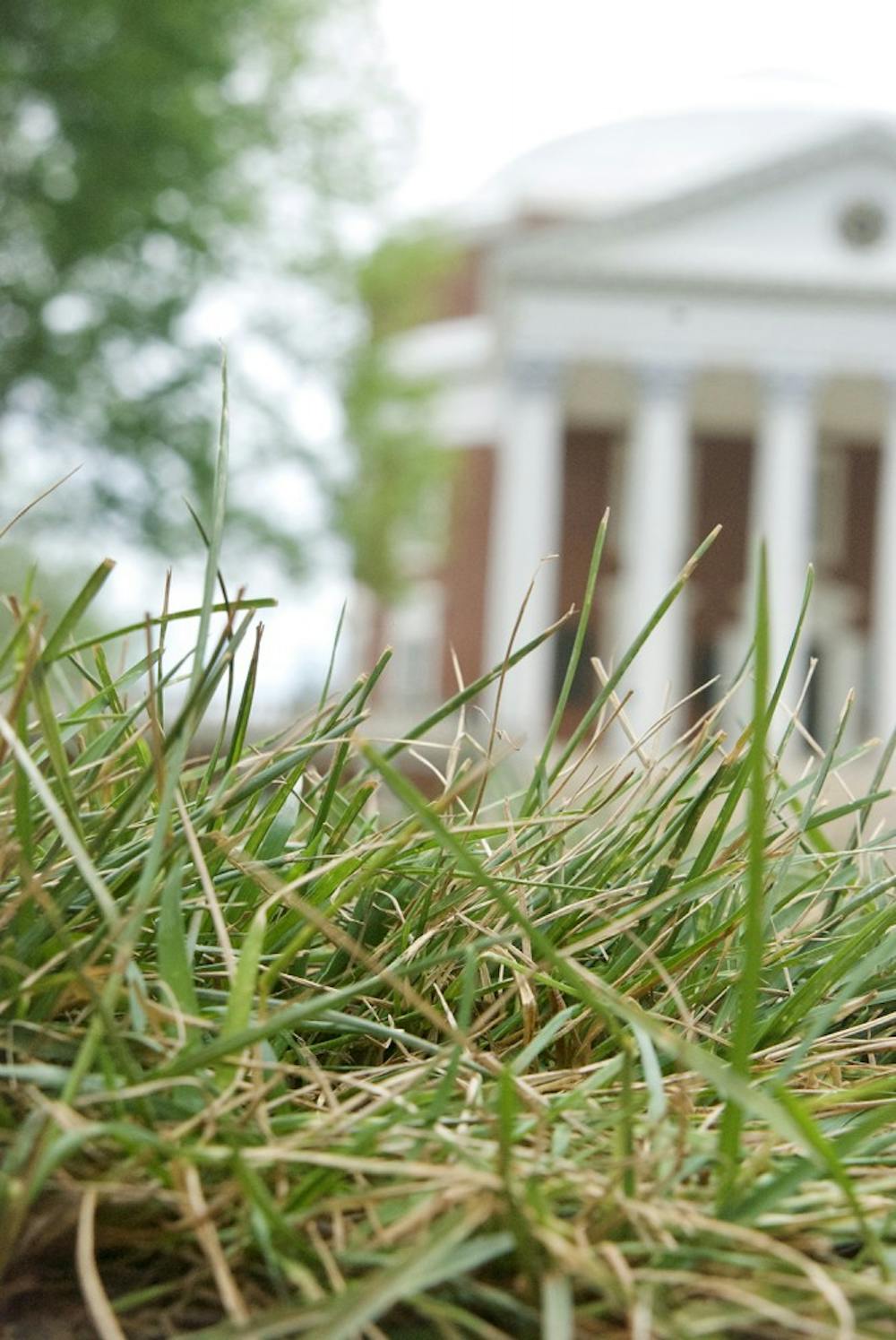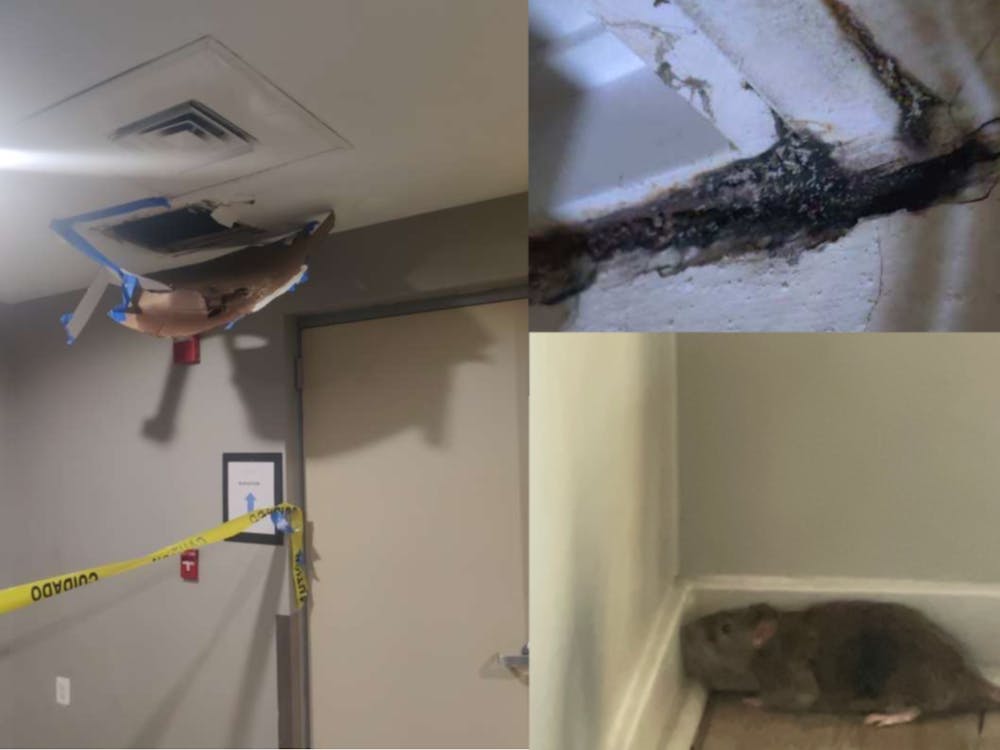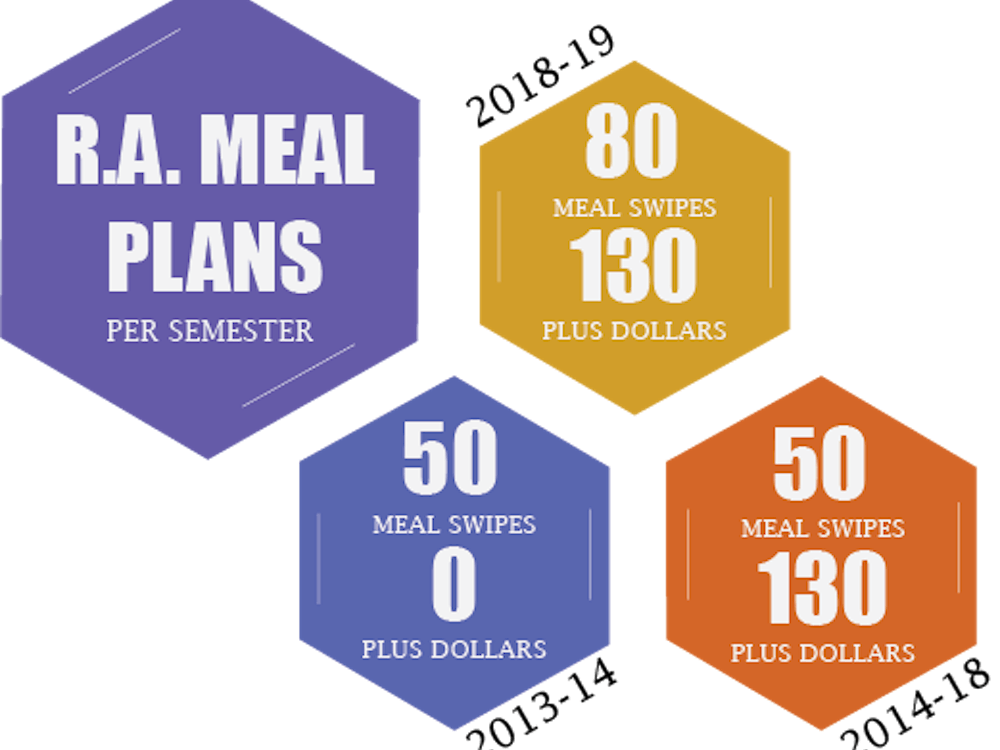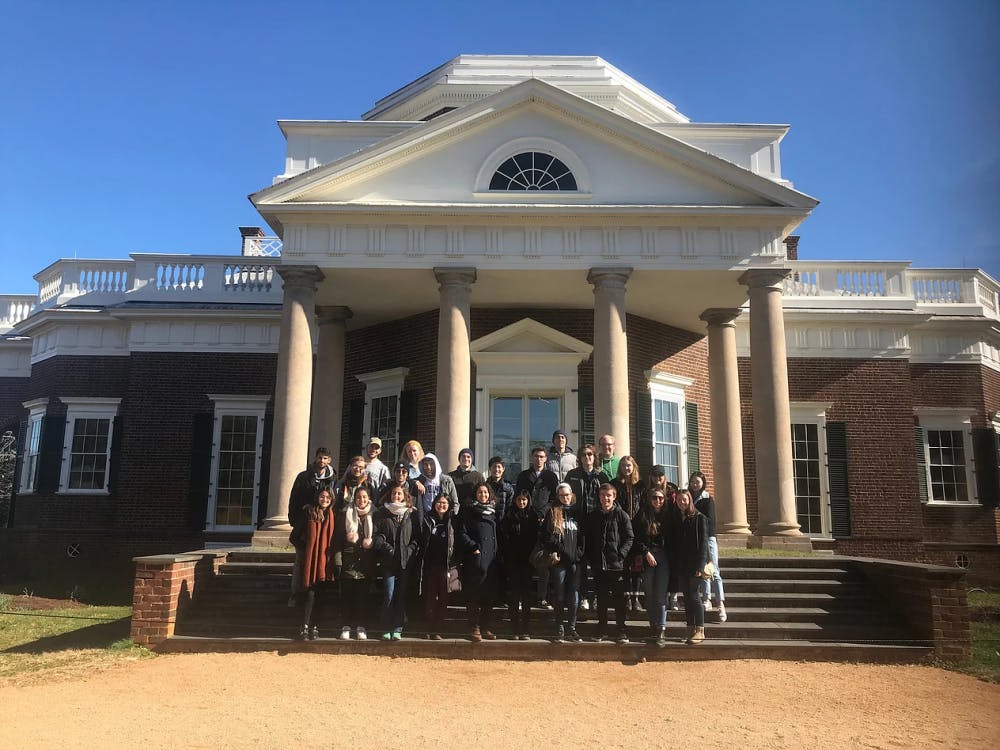The Lawn has been an important part of the University community ever since its founding in 1819. As such an important part of the community, the Lawn undergoes significant maintenance every year.
When treating the Lawn and other areas of turf, the University emphasizes sustainability and minimizing the environmental impact, according to Chris Ward, the Landscape Department’s turf manager. Ward described in an email to The Cavalier Daily how the University stays in accordance with the state-mandated “Nutrient Management Plan.”
Virginia’s Department of Conservation and Recreation implemented the program “to manage both urban and agricultural nutrients found in fertilizers, manure, biosolids and other sources so that they retain their efficient use yet don't impair the quality of Virginia's ground and surface waters,” according to their own website.
Ward explained how the Nutrient Management Plan for the University specifically aims to reduce runoff wastes by determining how much and what type of fertilizer is necessary for each plot of turf, which is achieved by soil sampling.
“This balance of sod, seed and fertilizer is integral to maintaining dense turf not only for aesthetics and recreation but to prevent the erosion of soil,” Ward said. “These soil particles known as sediment are often considered to be the most common pollutant of our waterways.”
The importance of sediment pollution isn’t lost on Jeff Sitler, the environmental programs manager and associate director of environmental resources for the University.
“The Lawn area comes under our Municipal Separate Storm Sewer System Permit, for which we have to manage our stormwater from all areas of the University,” Sitler said. “We work with landscaping groups as an example and talk about pollution prevention programs to reduce the pollutants that come off of the Lawn and other areas.”
Extensive testing is done to ensure that procedures are followed that lead to the most beneficial result for the environment.
“Landscaping staff goes out with a small shovel and digs out about a quarter to a half cup of soil at various locations and sends those samples to a research lab,” Sitler said. “They do the analysis that measures pH, nutrient content and some other parameters that tell us what needs to be applied to the grass.”
The samples taken throughout the year are used to guide fertilizer applications, according to Ward. The University uses synthetic fertilizers because they can be blended to meet the guidelines.
On average, the amount of testing done on the Lawn depends on the area.
“Areas that are heavily used and revegetated routinely might be done once a year or more, but usually it is about every other year. It varies depending on the area and what they are doing,” Sitler said.
These tests are done in order to analyze runoff to see what can be done to reduce erosion and ensure ground-cover, according to Sitler.
According to Ward, the total cost of maintaining the Lawn in fiscal year 2016 was approximately $147,000. Up to now, in fiscal year 2017, about $119,000 has been spent.
Not all of the money is spent solely on maintaining the grass. The estimate also covers other areas of maintenance including tree care, trash and leaf removal and storm clean-up, according to Ward.
APPA: Leadership in Educational Facilities awarded the University its Sustainability Award in 2016, according to the University’s website, for “leadership in embedding sustainable practices throughout the University.”
The purpose of the award is to “recognize the current level and effort of a facilities management department and the integration of sustainability into the academic curriculum of the institution.”
Recently, the Lawn has been touched up and replanted, drawing attention from students due to the large construction machines and orange fencing lining marked areas of it. Several tasks were completed on the Lawn over the past few weeks, according to Ward.
“The most evident was the sod replacement along several walks and down the center. The turf along the various walks was worn down from foot traffic and various events,” Ward said. “The strip of sod running down the center was to level a drainage low area which collected water and created problems for events such as Final Exercises.”
In addition to the other maintenance, surface drains were installed in front of the Rotunda and on the southern end of the Lawn. Rotary aeration was completed throughout the Lawn to alleviate compaction and promote the development of grassroots, according to Ward.
Keeping the Lawn in top shape can be challenging due to the heavy foot traffic, according to Ward.
“Not only is it essentially a public space for daily use by students and visitors, but also is increasingly being using for large organized and impromptu events,” Ward said. “This use obviously damages the mature grass as well as limiting [sic] the ability to establish new grass from seed. It’s this situation that makes sod installation the only viable option in the high use areas.”
Shota Ono, a fourth-year Engineering student and resident of the Lawn who has seen evidence of the construction and development firsthand, said it’s not common practice to notify residents ahead of time.
“I see the construction when I go out onto the Lawn in the morning. I would say the noise and dust / exhaust gas can be a minor inconvenience,” he said in a text message. “The Lawn is old and needs maintenance, though, so it’s very understandable.”
The amount of effort put into maintaining the Lawn’s appearance for Final Exercises isn’t the only attempt over the course of the year to keep it looking pristine, however.
Ward described the continual labor put into the area by the University’s employees.
“Generally speaking, no area of the Lawn is sodded more than once a year. However, the entire Lawn is seeded three times a year on average,” he reported.





